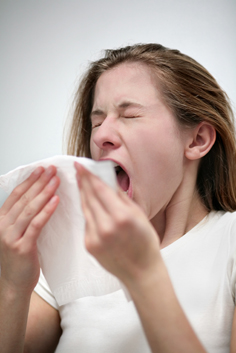
Now that the weather is improving, your allergies may be getting worse. Pollen allergies are some of the most common chronic diseases in the United States, affecting an estimated 35 million people, according to the National Institute of Allergy and Infectious Diseases (NIAID). And of all the things that cause an allergy, pollen is one of the most widespread.
When someone has an allergy, they're sensitive to substances that don't affect most people, in this case, pollen. The most telling sign of pollen allergy is that it is seasonal; people only have symptoms when the pollen they are allergic to is in the air. This type of allergy is termed "seasonal allergic rhinitis." Rhinitis is the term for an inflammation in the nose. When a person is allergic to several pollens and/or molds or dust or has symptoms year round, it's called "perennial allergic rhinitis."
The Food and Drug Administration (FDA) says generally, people with pollen allergies come from families in which allergies are common. Those allergies can be to just about anything, not only pollen, including food, animal dander, mold, dust or other substances that can cause reactions. Someone with two allergic parents is more likely to develop allergies than someone with one allergic parent.
Though pollen is one of the most widespread allergens, there are things you can do to avoid it. It can be helpful to pay attention to pollen counts given in local weather reports. A pollen count is a measure of how much pollen is in the air at a given time. Counts tend to be higher in the morning and on dry, windy days. It's a good idea to stay indoors when pollen counts are high.
Some other tips include:
- showering after being outside
- keeping doors and windows closed
- wearing a mask when working outdoors
- using the air conditioner in your home and car
If your symptoms are caused by pollen, they will tend to recur at the same time each year. That's because most plants have generally the same pollinating season each year. Trees often pollinate in the spring, grasses in the summer and many weeds in the fall. We often talk about "hay fever" or "rose fever," but NIAID says it isn't hay or roses that cause the problem. The pollen that causes most pollen allergies tend to come from plain-looking plants (trees, grasses and weeds) rather than those with showy flowers. Depending on what you are allergic to and where you live, you can usually count on your symptoms starting around the same time each year.
If allergies are making your life miserable, consider seeing an allergy specialist, like Dr. Ian Swift at
Campbell County Clinics—Ear, Nose and Throat. There are effective treatments for allergies, and testing to determine the specific allergens to treat.